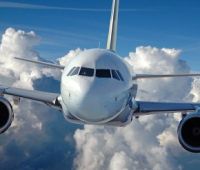

According to a study by the University of California, Irvine (UCI), for the aviation industry to achieve net zero by 2050, it will have to purchase upwards of $1 trillion (£811 billion) in carbon offsets.
The study claims that unless both airlines and travellers change the frequency of catching flights, this would be the only option for the sector achieving its climate goal.
It reveals that in the last regular year for air travel before the pandemic (2019), aviation was responsible for 3% of the world's carbon emissions.
Nine different climate models were used to estimate the amount of offsets needed for net zero, with even the most optimistic about people reducing the amount they fly still needing $60 billion (£48.6 billion) in offsets by mid-century.
Nevertheless the researchers do caveat these findings with the fact that it is still a hotly debated subject whether offsetting is truly meaningful for the environment, and that airlines should not be using them as an excuse for business as usual.
Directly reducing their impact on the environment is crucial for any chance of net zero. However Steven Davis from UCI did accept: "The industry cannot achieve net-zero climate impacts without some (carbon) removal".
Explaining the nine scenarios used in the study, he added: "Changes in demand could be a really important source of emissions reductions, but all of our scenarios anticipate overall increases in demand by mid-century given expected growth in global population and affluence".
Reduced demand is considered critical to net zero, however, without a drop in flights taken, the amount of sustainable aviation fuel (SAF) required would be double what was produced in 2019. For this amount of SAF to be produced, land the same size as one-third of the US would need to be freed up, the report claims.